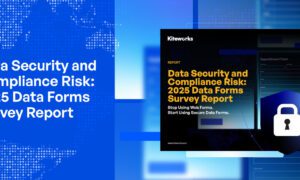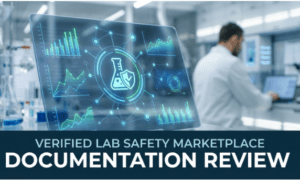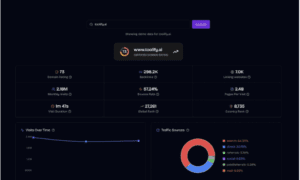Mohammed Arshad set out to solve a problem that has challenged tech executives for years: making privacy compliance effective without slowing everything else down. Many existing privacy tools are complex and cumbersome. However, this engineer and his team envisioned a solution designed to be both powerful and user-friendly, something that large enterprises, including Fortune 500 companies, could genuinely benefit from.
The University of Illinois at Chicago graduate holds master’s and bachelor’s degrees in electrical and computer engineering. His career trajectory reads like a Silicon Valley success story: He climbed from technical analyst to software engineer, then client engineering manager, before landing in his current role. Each step taught him valuable lessons about the opportunities privacy compliance presents to enterprise IT teams and shaped his understanding of what enterprises truly need.
How Virtual Agents Are Transforming Privacy Compliance
Arshad’s breakthrough centers on patent-pending technology that uses virtual agents for security monitoring. Picture having digital watchdogs that work continuously, catch every detail, and successfully protect user privacy while maintaining system integrity.
“Our innovation enables the collection of highly granular data while maintaining core web technologies and preserving user privacy,” Arshad explains. That might sound like technical jargon, but it represents a significant advancement in the field. Most privacy tools force companies into an impossible choice: follow the rules or keep systems running smoothly. Arshad’s approach enables both simultaneously, eliminating this traditional dilemma.
The proof speaks volumes.
Fortune 100 companies already use this technology to power their web privacy programs, protecting millions of users while keeping massive corporations compliant. Arshad and his teams work sits at the center of an industry that evolves faster than anyone can keep up with, positioning him as a leader in digital tracking technology.
Cutting Through the Regulatory Maze
Privacy regulations have become increasingly comprehensive and demanding, such as the General Data Protection Regulation, California Consumer Privacy Act, and Quebec’s Law 25. This regulatory landscape resembles a structured framework where each step leads to better compliance outcomes. Every regulation offers specific approaches; managing them usually means building integrated systems for every market in which companies operate.
Arshad’s solution particularly shines in this complex environment. His virtual agents go beyond simple monitoring. They simultaneously detect, analyze, validate, control, and report on collected data across multiple jurisdictions. Instead of needing separate systems, companies can use one unified platform for European customers, California residents, and Quebec users. One comprehensive platform handles the entire regulatory challenge.
What sets this technology apart is the unprecedented level of detail companies receive. Traditional privacy tools provide reports with limited actionable insights, leaving compliance teams to make educated guesses. Arshad’s method tells organizations exactly where their data goes and how systems process it, and it definitively confirms whether they meet regulatory standards across all jurisdictions. “Clear insights replace guessing games,” Arshad notes.
Navigating Complex Privacy Laws
The technology addresses complex regulatory challenges across multiple frameworks. Beyond GDPR and CCPA, enterprises must also comply with the FTC Act Section 5, the CCPA as amended by the CPRA, and sector-specific regulations such as HIPAA for healthcare data. Each law introduces distinct obligations for digital marketing teams, requiring them to balance campaign performance with strict privacy standards.
The virtual agent system extends monitoring capabilities across web and mobile platforms, with ongoing research exploring similar applications in Connected TV (CTV) environments. This evolving approach enables organizations to move from basic compliance toward more adaptive, data-governance-driven privacy programs.
Why This Matters Right Now
Client feedback consistently remains positive across all implementations. Companies continually highlight “meaningful insights” and report high satisfaction with the platform’s performance. Through Arshad and his team’s carefully designed UI, they receive actionable data and educated assessments about their privacy posture rather than generic reports.
Arshad’s role extends beyond traditional engineering responsibilities. He leads front-end engineering, system design, and feature development while working directly with clients to customize solutions. This client-centric approach ensures that the data organizations receive through his UI design remains actionable and tailored to their specific operational needs.
The timing proves perfect for this innovation. Privacy extends beyond technical issues and has become a fundamental consumer expectation driving purchasing decisions. Regulatory bodies have real enforcement power and actively use it, imposing significant financial penalties on non-compliant organizations. Companies that used to treat privacy as a secondary concern now prioritize comprehensive compliance strategies.
Career Evolution and Industry Transformation
Arshad’s career trajectory perfectly mirrors how the industry has evolved over the past decade. He started when privacy mainly existed as a theoretical concept and has grown alongside its transformation into something that can make or break a business. His diverse experience spans technical analysis, software engineering, client management, and product design, giving him insights that most privacy specialists miss.
Building Tomorrow’s Competitive Edge
The patent application for “Security Monitoring via Virtual Agents” provides a comprehensive blueprint for solving problems that enterprises face daily. The system addresses critical challenges: effectively auditing user data collection processes, managing compliance requirements across countries with vastly different regulatory frameworks, and maintaining user trust while meeting complex business objectives.
This innovation fundamentally changes how organizations approach privacy program maturation. Rather than reactive compliance measures, enterprises can proactively identify privacy risks and implement preventive solutions. The system helps organizations understand which data is most crucial for their operations and how to leverage that information strategically.
Industry Impact and Future Vision
Web privacy continues evolving at breakneck speed, driven by multiple factors. Consumer expectations shift constantly, regulations become stricter, and modern web applications create data flows that reach incredible complexity levels. Traditional monitoring tools require significant upgrades to handle these demands. “My work bridges the gap between what legal requirements demand and what works in practice,” Arshad explains.
The ripple effects extend far beyond individual companies implementing the technology. When Fortune 500 enterprises improve their privacy practices using these tools, they set new industry standards for suppliers, competitors, and entire business ecosystems. Arshad is recognized for his behind-the-scenes work that directly shapes how millions of people experience digital privacy protection in their daily interactions.
Privacy compliance goes beyond avoiding regulatory fines and enables companies to build genuine trust that provides a sustainable competitive advantage. Companies that master privacy compliance can move faster into new markets, confidently enter international territories, and build significantly stronger customer relationships. Arshad and his team’s innovative method provides the essential technical foundation that makes this transformation possible, converting what traditionally operated as a cost center into something that strengthens the bottom line and drives business growth.



































